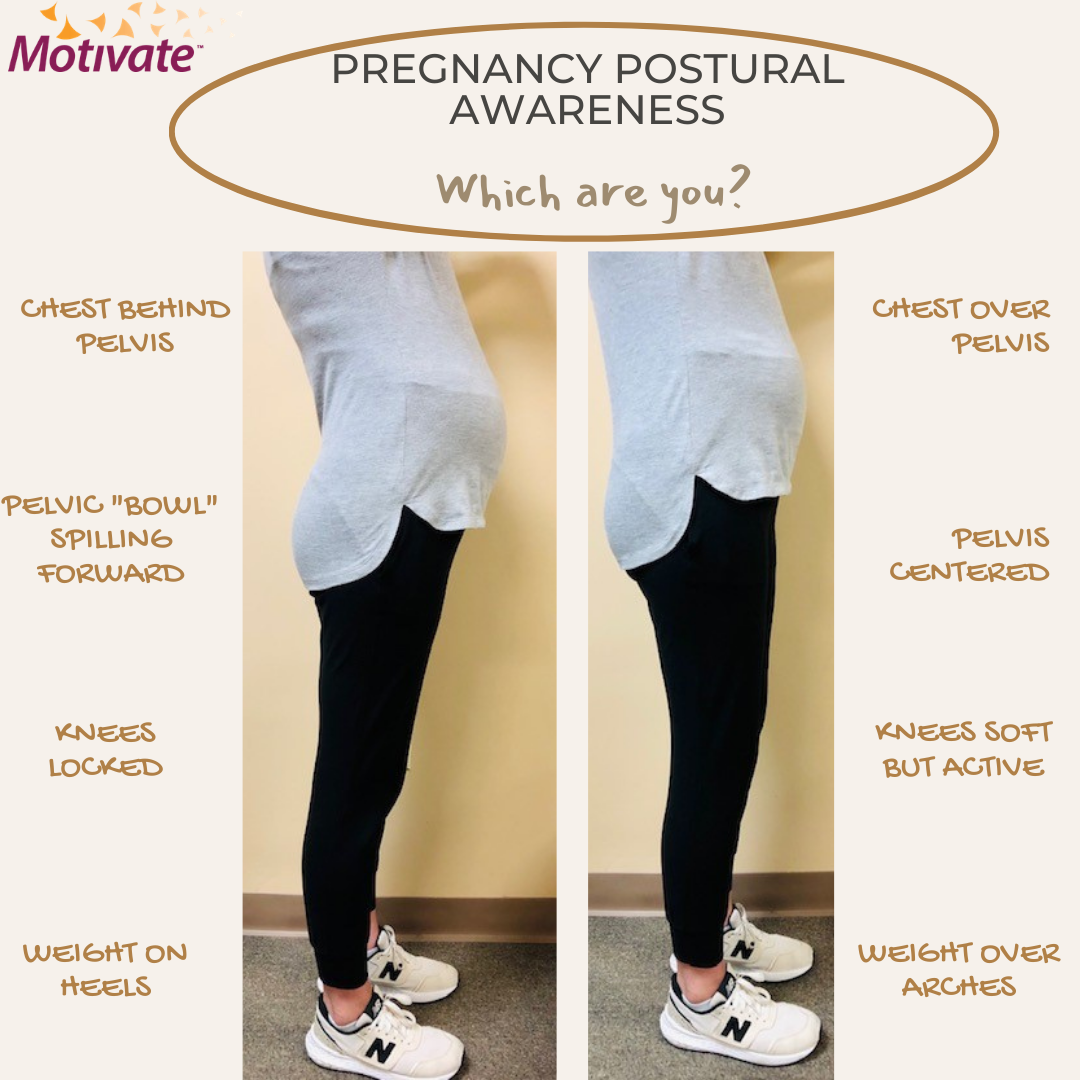There are many changes in regards to posture during pregnancy. During pregnancy you notice following changes
- Forward head position. This might lead to: Neck pain, Nerve irritation of arm and hand, Pain between shoulder blades, carpal tunnel syndrome.
- Extension of Neck and head: This might lead to Headaches, Neck pain, Tightness of head and neck muscles.
- Extension of Upper back and Thoracic spine: This might give you Upper back pain and rib pain.
- Increased Lower back curve: One might experience Low back pain, Stiffness of joints, Nerve irritation/ pain in Lower extremities, Tight muscles.
- Forward Pelvic Tilt: That will lead to Low back pain, Leg pain, Pelvic pain, Overstretched weak core muscles.
- Hyperextension of knees: Overloaded joints. Irritated cartilage. Knee pain. Foot pain.
- Flattening of the foot: Dropped arches, foot pain, plantar fasciitis, swelling over foot and ankle.
To correct DRA we need to fix (bring awareness to) the postural issues which woman develop during pregnancy.
Relaxing the Glutes is one of the strategies to reduce reflex muscle tightening due to poor posture. It will also help to maintain pelvic in Neutral position and reduce excessive lumbar lordosis. Maintaining the correct alignment of body is important. When we work on correcting the DR how can we forget to work on breathing. Growing baby pushes the diaphragm up and ribs outward, this alters the breathing pattern. That’s why post pregnancy most of the women has altered breathing pattern. So most women have to relearn the correct breathing pattern postpartum. First step to correct breathing pattern is to stop shallow breathing. Altered posture and breathing during pregnancy tightens up the neck and chest muscles. That creates pressure over upper chest area. Accessory muscles work hard when you do shallow breathing and that creates more tightness around neck and chest. Now why we need deep breathing to correct diastasis recti?
We have a fascia in front of the belly which keeps the rectus abdominis muscle together, called linea alba. Fascia needs correct amount of stimulus to heal. If you give too much stimulus you are straining. If you give less stimulus the tissue will take longer time to heal due to insufficient stimulus. A great breathing pattern involves diaphragm expansion in the front and ribcage expansion on the sides & back. Getting side expansion helps to improve length tension relation of lateral abdominals. The 360-degree expansion will help to lengthen the lateral abdominals, that will help to heal DR. Next, we can talk about “Exhale with movement re-ed”. Breathing out while doing movements like sit to stand, getting into the car, getting out of the car will help to reduce the intra-abdominal & intrathoracic pressure which we create during these activities. This will help to relax chest, neck, lower back, and PF muscles. Usually, we tend to hold our breath when we do ADLs, that raises the intrathoracic & intrabdominal pressure. So, when we breathe out instead of holding our breath during ADLs that will help to heal DRA.
Practice breathing first by lying down then gradually in more upright positions, like standing.
